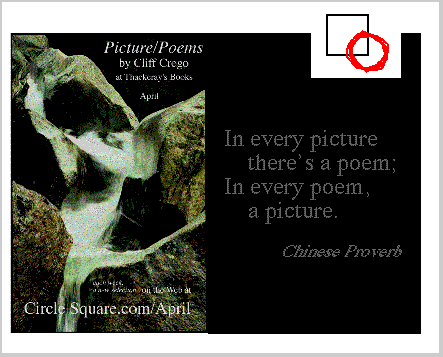
|
May 2002:
suggested link
When
Markets Go Mad
PHYSICISTS TRY TO PREDICT
WHEN STOCK PRICES WILL
CRASH by David Appell
featured at sciam.com
"About $4 trillion in market wealth
vanished between the April 2000
bursting of the Nasdaq bubble and
its recent stabilization
at lower levels."
|
From Scientific
American
http://www.sciam.com/
COMPLEXITY
When
Markets Go Mad PHYSICISTS TRY
TO PREDICT WHEN STOCK PRICES WILL CRASH
by David Appell
WHEN PHYSICS GOES TO WALL STREET
"Trying to forecast movements of financial markets using mathematical
principles is nothing new. Researchers have postulated, for instance, that
bond prices are "pulled" to values that are the "strange attractors" of
complexity theory. Those who apply Elliot Wave Theory think that mass
psychology pushes the markets into characteristic, repetitive patterns
of waves reminiscent of the self-similarity of fractals." [...]
"Systems composed of so-called agents that compete for limited resources
and whose strategies evolve span a range of disciplines, such as economics,
evolution, traffic analysis and network design (in which the agents of interest
are, respectively, traders, species, drivers, and data packets). Extreme
events
in such systems, such as punctuations in evolution's equilibria or traffic
jams
during rush hour, are important because they are drastic and because they
shape the system for a long time afterward. Whereas some extreme events
are triggered by random, isolated incidents (such as the stock market's
steep
decline after September 11), others arise from forces internal to the system."
[...].
The numbers
. . .
"TRADERS
all reacted the same way on April 14, 2000,
causing the Nasdaq to plummet a whopping 361.58 points.
About $4 trillion in market wealth vanished between the April
2000 bursting of the Nasdaq bubble and its recent stabilization
at lower levels."
|
Other unrelated, but interesting links . .
.
Farm
Preserves Natural Heritage
(requires RealAudio.
To
download a free player, go to
http://www.real.com/player)
http://glrc.org/ a report by
Lester Graham of
The Great Lakes Radio Consortium (or read
text)
"Along the fringes of urban growth farm museums are sprouting here
and there. They're trying to preserve a bit of the rapidly changing terrain
(as fields become subdivisions), but one of these farm museums recognizes
that the land wasn't always farmland. Before it was plowed there was
another earlier, vibrant landscape." [...]
"As farmers discovered just how bountiful the rich prairie soil was,
it was exploited as almost no other resource has been. The corn that
replaced the prairie plants at first benefited from the nutrients left behind.
For the first several plantings, according to credible accounts, the corn
plants grew to eleven and twelve feet high. As the benefits of the prairie
plants faded, the corn didn't grow as high. In 100 years the tall grass
prairies, which had stood for millennia, almost completely disappeared,
replaced by crops. Today, it takes a lot of fertilizer and other chemical
inputs to get results anything close to those crops that first benefited
from what the prairie did naturally." [...]
Nuclear
Waste to Set Sail on Great Lakes?
(requires
RealAudio)
by Dan Karpenchuk The Great Lakes Radio Consortium
(or read
text)
"According to reports from Washington, the U.S. wants to ship thousands
of tons of radioactive waste by barge across Lake Michigan." [...]
| Picture/Poem Link Archive
2001 |
| back to
Picture/Poems: Central
Display |
|
Central Display |
Map
|
TOC:
I-IV |
TOC:
V-VIII |
Image
Index |
Index |
Text Only
| Download
|
Newsletter
|
About
P/P |
About Cliff
Crego
|
(V.12.2002) Comments to
crego@picture-poems.com
